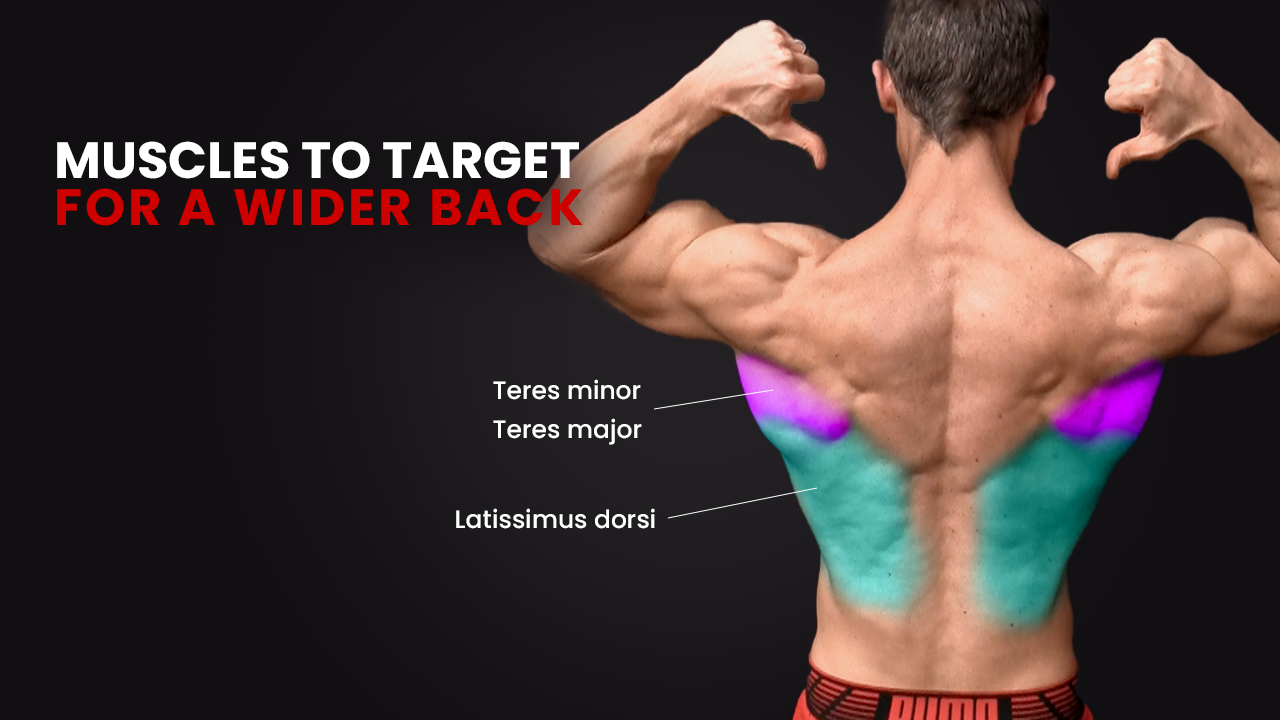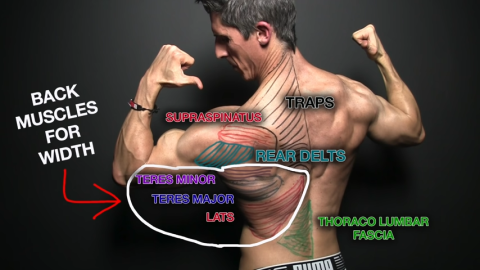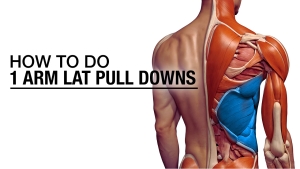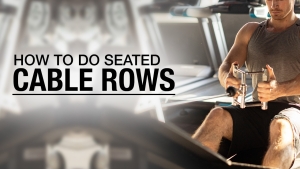
HOW TO GET A WIDER BACK
Guys, if your goal is to have that larger upper body aesthetic, it doesn’t matter how big your arms are or how thick your chest muscle mass is. You need a wide back.
There are a lot of different back muscles we can talk about, but when the goal is gaining serious width, you should be focusing on the back muscles that run east to west on the outside of the body.
That narrows it down to three target muscles that are going to create the width from the outer torso:
- Latissimus dorsi
- Teres major
- Teres minor
If you want to learn how to get a wider back, it’s not just about the exercises you do in your training, but how you are doing those exercises.
Let’s take a look at the best exercises to build a wide back and how to properly perform them to achieve the most muscle size.
ANATOMY OF THE BACK MUSCLES
You know the drill. Before I jump into how to get back width, I want to make sure you understand the anatomy of the back.
You need to know the basic layout of the back, so you’ll know which primary muscles we’re targeting.
After all, what good is a back activation exercise if you aren’t sure which part of the back is the main focus?
I want you to have a strong mind muscle connection before going after this host of exercises, and covering the location and function of these muscles will help you do just that.
Once you understand which muscles are responsible for developing muscle growth, you’ll be able to effectively target them to optimize your muscle size.
LATISSIMUS DORSI

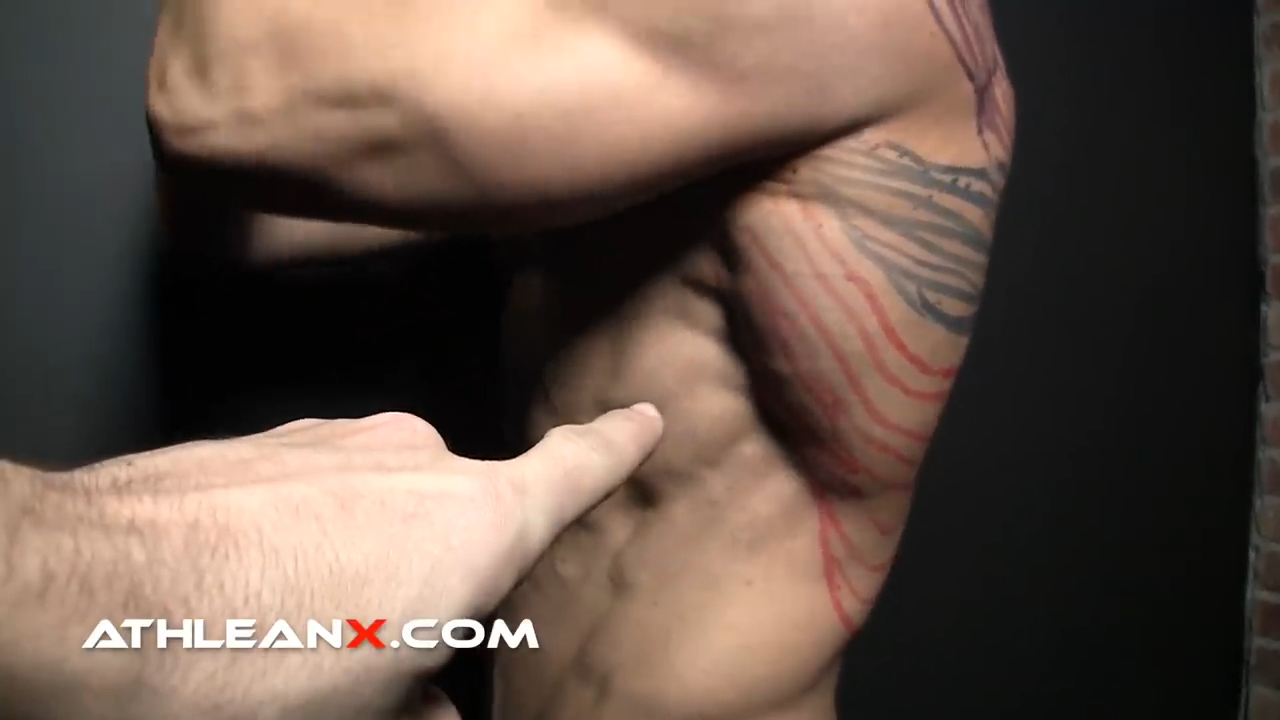
Naturally, let’s start with the biggest muscles on your back: the lat muscles.
Located on the sides of your body, a lot of people refer to the lats as your “wings.” This is because they very much have a wing-like shape when they are fully developed. Look at any high-performance athletes, especially bodybuilders, to see what I mean.
Phil Heath’s 7-time Mr. Olympia’s back-breaking workout is a perfect example to type into Google.
It’s easy to see the lats, which makes it easier for you to focus on them.
Rowing movements like the Inverted Bodyweight Row, Barbell Row, and Lat Pulldown exercise are excellent for targeting the lats.
With that said, I’ve got some changes to these exercises that will take your back workout to the next level. More on that below.
UPPER AND LOWER TRAPS

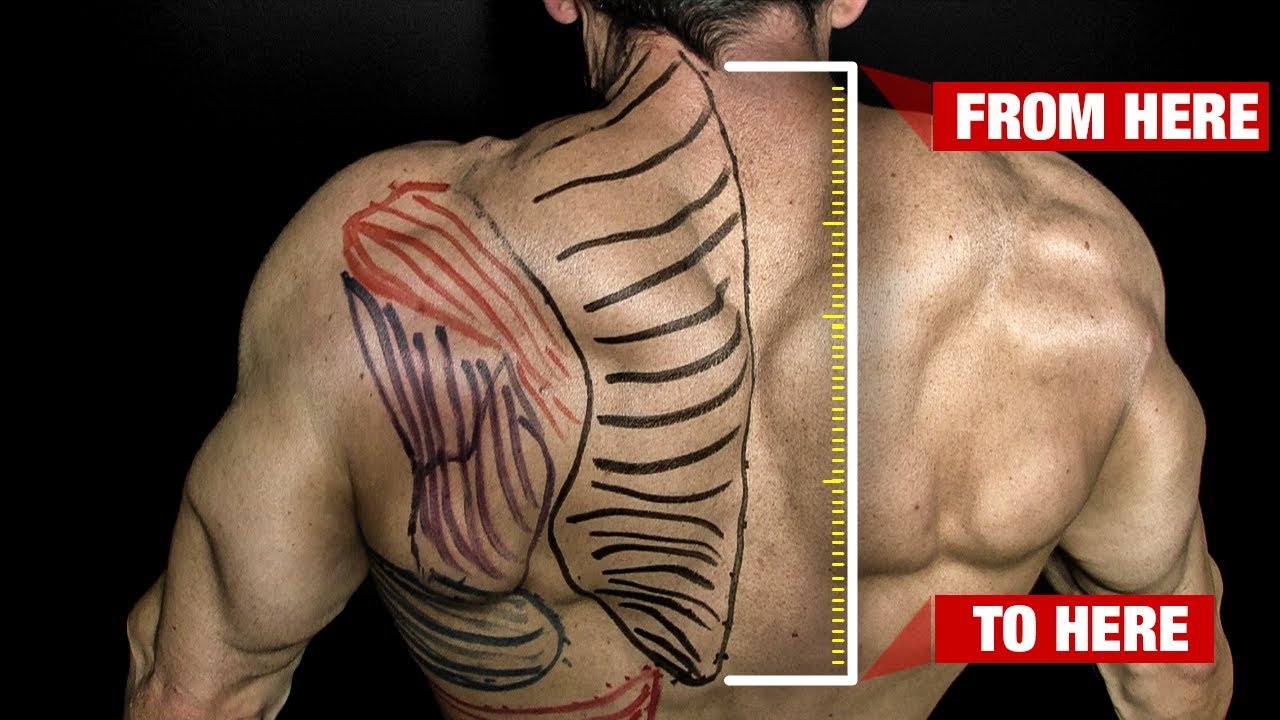
Next, we have the large triangle-shaped muscles, the trapezius and rhomboid. While not as big as the lats, these muscles are considered some of the largest on your back.
They help to support proper posture and function of your shoulders.
LOW BACK / ERECTOR SPINAE

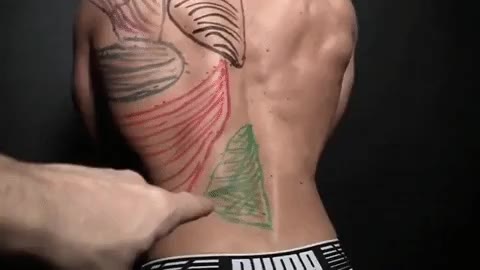
Since lower back pain is the number one complaint in medical offices across the globe, I think it’s safe to say most of us know exactly where the lower back is.
The lower back is crucial for functional movement patterns and posture.
Deep within the body, you’ll find the erector spinae which runs along next to the spine. It is also important for posture and functional movements.
The classic Barbell Deadlift is an effective exercise to strengthen these two muscles.
The lower back is one part of the total core muscles, so be sure to train it along with obliques, abs, etc.
ROTATOR CUFF


On the back of your shoulder, you’ll find the rotator cuff muscles. These make it possible to move your arm, so if you were to hurt your rotator cuff, it would be impossible to do any of the exercises below that help to grow wider lats.
TERES MAJOR

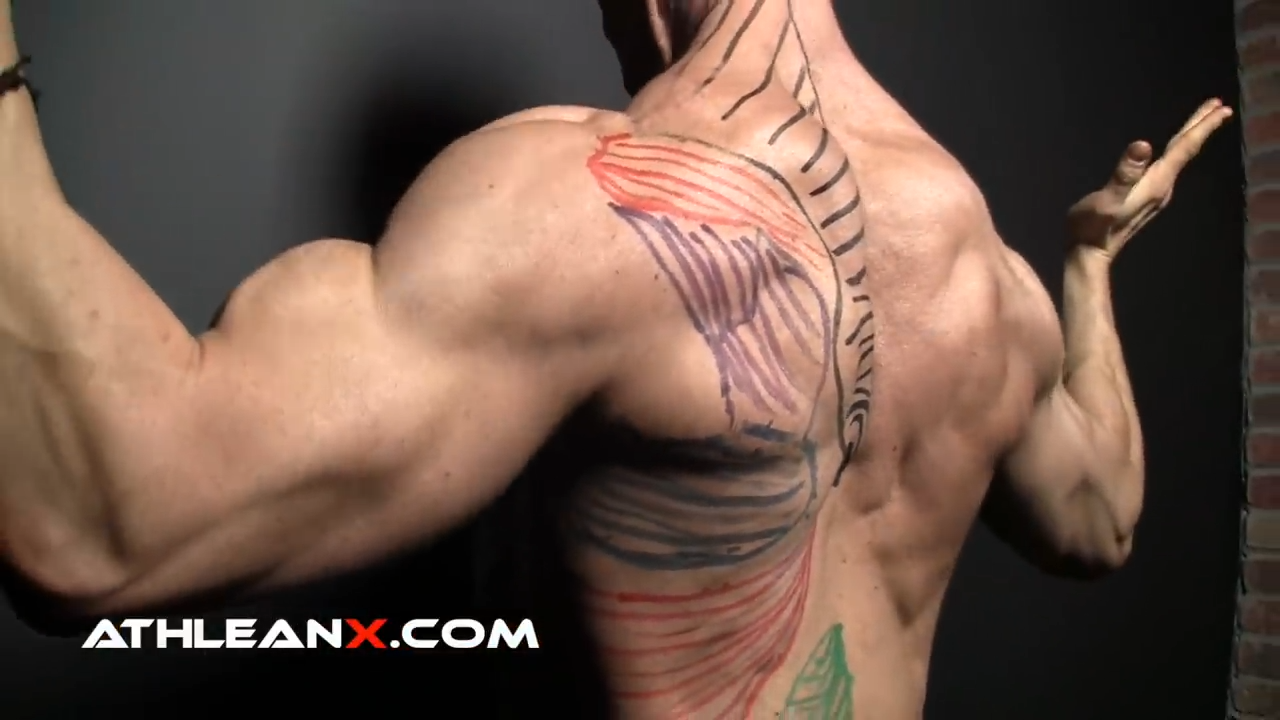
While it’s not as big as the others, the teres major is still important.
Just below the rear deltoids, it runs across your shoulder blades, and it works with the lats and teres minor to move your upper arm bone.
TERES MINOR
Finally, we have the teres minor. Now, while it does sound like the teres major, these two muscles have different functions in the body.
The teres minor is a rotator cuff muscle, so its main job is to ensure the glenohumeral joint is stable within the scapula. In other words, it helps the ball-and-socket joint stay in the socket.
No small task, right?
Well, the teres minor also ensures you can rotate your arms out to the side and back.
Again, can you imagine doing any back-focused bodybuilding exercises without this muscle?
LAT EXERCISES FOR A WIDER BACK
Instead of throwing all of these exercises to grow wide lats at you all at once, I’ve decided to break down the exercises into three categories based on the muscle they target.
That means we’re kicking things off with lat-focused exercises. And if you think I’ll just be talking about a Dumbbell Pullover and that’ll be it, think again.
UNDERHAND LAT PULLDOWN
If you want to learn how to get wider lats, you need to remember the anatomy that you just learned above.
We know that the lats are a huge muscle that is attached to the spine, and it comes down to the pelvis. The lats also come up and around to the arm.
The best way to get the lat muscles through a full range of motion is by getting your arms up and away from you as much as you can.
And one of the easiest ways to do this is by taking an underhand grip on a Lat Pulldown machine.


You can see and feel the lats really stretch out when you set up in the initial position. With an underhand grip on a pulldown machine, it puts us in a position where our arms are high up and out in front of us. This ensures flexion at the shoulder.
When you pull the bar down and back, you want to really try to squeeze the elbows into your sides which is called adduction. This is going to trigger a fully contracted state of lat activation.
ROCKING PULLDOWNS
With that being said, let’s say you get too bicep dominant when you get in Underhand Lat Pulldown position.
Maybe you tend to pull too much with your biceps. If that’s the case, you can use an overhand grip but keep it narrow.

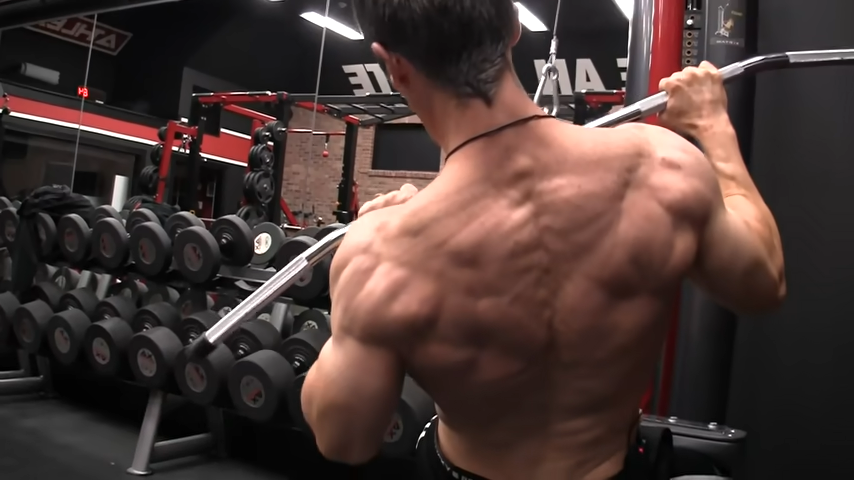
Instead of the classic overhand, shoulder-width grip, I want you to bring it in closer, and there’s a reason for this advantageous position: you’re going to extend to one side.
From the starting position, pull down and get to about shoulder height. From here, drop down and back with one side. The Rocking Pulldown involves coming down and going further than normal through rotation.
What we’re getting from this is an even more intense contraction because we get that adduction and extension behind the body.
ONE-ARM HIGH PULLEY ROW
While you can’t technically isolate the lats, you can get pretty close with the One-Arm High Pulley Row.
Also called the One-Arm Lat Pulldown, you can perform this exercise on either the cable station pulley machine or with a resistance band tied above your head to a pull-up bar.
The correct position to do this exercise is to drop your pelvis down and back and get your arm up and away from you.


This will create great separation and if you’re watching yourself in a mirror or recording yourself with a camera, you’ll be able to see the activation, especially during that great stretch.
LANDMINE ONE-ARM ROWS
If you want to target your lats but you don’t have access to a Lat Pulldown machine for training, then you can use a landmine barbell with weight.

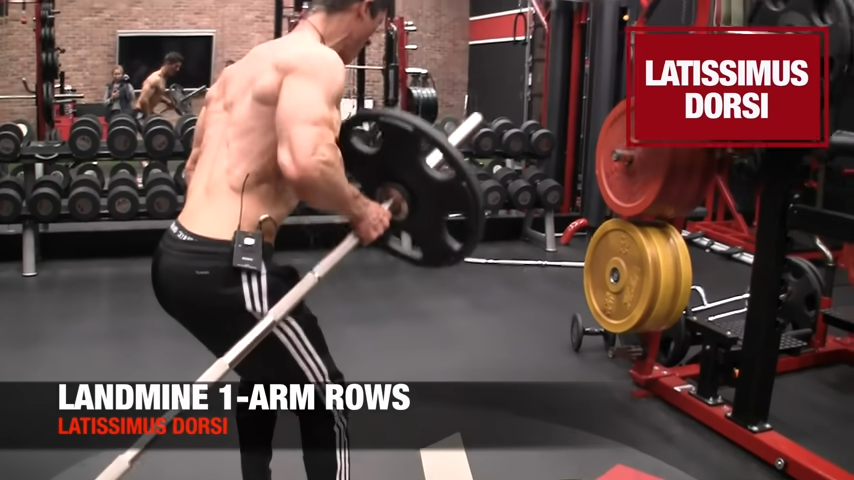
You can also place a pillow into a corner then put one end of a barbell into the pillow. It’s not the best option and I wouldn’t recommend going heavy if you do the pillow trick, but it does work in a pinch.
Stand next to the barbell and grab at the top just below the weight plate. Sit back and get your arm up in front of your body higher than usual so you can get a greater stretch on the lat.
Now, row the barbell, allowing the weight plate to come to the ground if it is a larger plate. Remember to create more distance between your arm and your pelvis. By sitting back that’s what you will automatically do without thinking about it.
EXERCISES FOR THE TERES MAJOR
Now we move on to the teres major and the best exercises to target it for a wide back.
The teres major is no less important when we want to develop that full thickness in the back, and these are some of the best exercises to build a wide back.
WIDE GRIP PULLDOWNS (WITH INTERNAL ROTATION)
To get after the teres major, you have to get the arms away from the body and try to take the lats out of the exercise. You do that by getting less adduction and more abduction. With abduction, you want to get the arm away from the body.
And you can do that with the Wide Grip Pulldown.

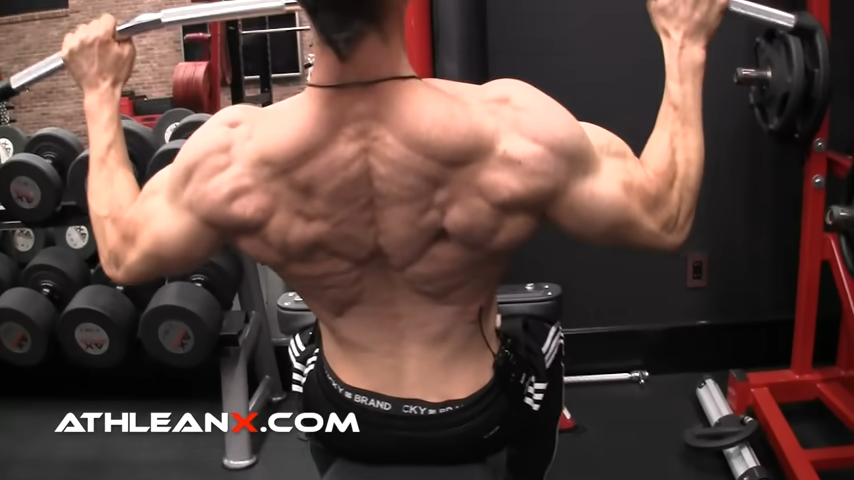
One of my grip concerns is that you really need to go wide with this exercise. Naturally, if you’re using a narrow grip, then your arms will stay narrow. But if you go wide, then your arms are going to be wide and this tends to put us in a position that focuses on internal rotation.
This is exactly what you want because internal rotation is a better way to activate the teres major.
For the record, this isn’t dangerous internal rotation because your arms should be positioned at a 45-degree angle in front of your body. Your arms shouldn’t be way back behind your body. When they’re out in front, this puts your shoulders in a safe position.
Instantly, when you pull down from this position, you can feel the teres major is popping and doing more of the work than it was doing before.
MEADOWS ROW
What if you don’t have a cable pulley machine? Well, you can use the Meadows Row. Created by a good friend of mine, John Meadows, this exercise uses an overhand grip and directs the arm away from your side.

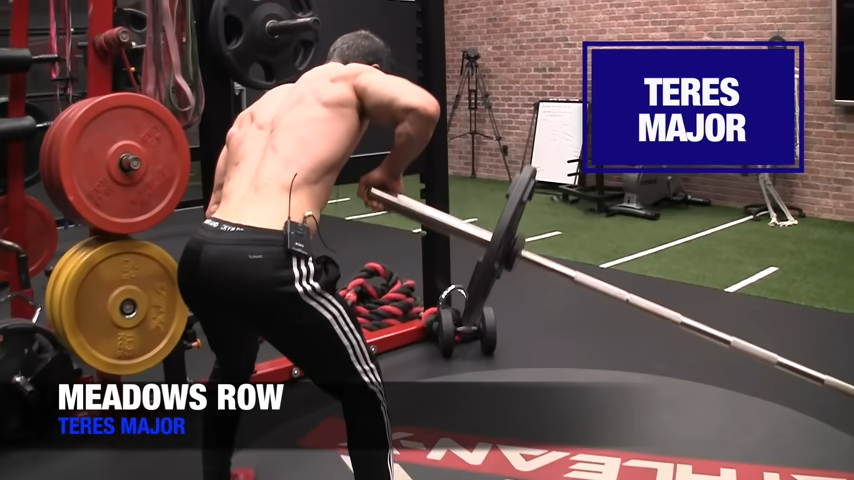
For this, you’ll need a barbell landmine.
Get into a wide foot stance with the barbell in front of you. Keep the core tight as you bend over and grab one end of the barbell. From here, move it up and away from your body.
You’ll immediately notice that you get less adduction, which means it’s not as tight to your side. Again, you can see that teres major is doing a lot of the work.
TERES MINOR EXERCISES FOR A WIDER BACK
Finally, we move on to the teres minor, which I guarantee most of you have neglected throughout your fitness journey.
That’s okay, you can make up for lost time here with these exercises.
FACE PULLDOWN
Now, if you want to get teres minor then you need to go from internal rotation to external rotation.
This is a rotator cuff muscle so if you want to get this, you need to figure out a way to externally rotate. And we could do that with a Face Pulldown.


Remember these are weaker muscles, but they still have to be trained so you should skip the heavy weight and go a little lighter on the weight.
Use an underhand grip on the handles and as you pull down, you also pull back so that you’re going into external rotation at the shoulder.
You’re still pulling the arm back, down and behind you, but you can feel that the teres minor is actually doing the work.
(STANDING) FACE PULL
Lastly, I want you to grab a cable pulley rope. You know I wouldn’t end a single back workout article without talking about the Face Pull.
The Face Pull happens to be one of the absolute best exercises you can do that targets the teres minor.

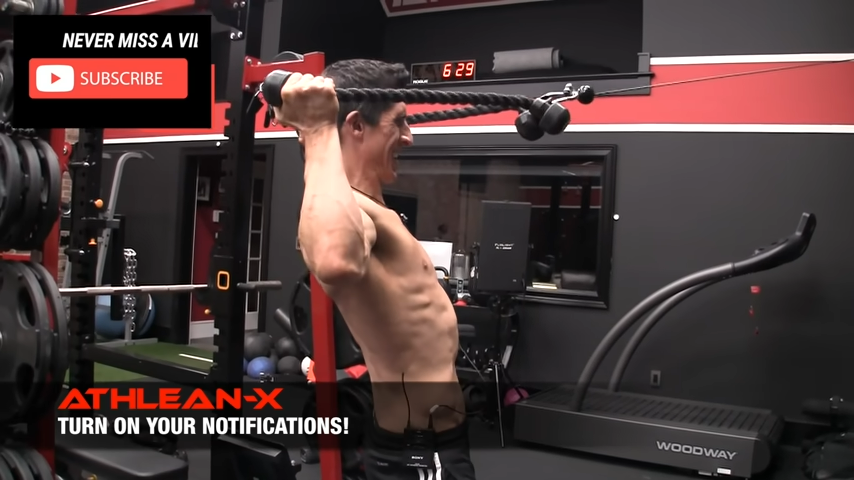
For this, I recommend attaching two ropes, so you have more room to move. With feet shoulder width apart, bring the hands up. You’ll be using an overhand, shoulder-width grip.
Pull your hands and elbows back, and remember that you want to let your hands win the race against your shoulders with the finish line being behind your head.
If you do it to where your elbows are winning that race, then you’re instantly rotated, so don’t do it that way. Come back with the hands first.
I guarantee you’ll feel the teres minor working here and it’s doing a lot of the work because of that external rotation at the shoulder.
W-RAISE / W-ROWS
Let’s say that you’re ready to work the teres minor but you only have dumbbells; maybe even a bench with dumbbells so you can throw in other exercises like the Straight-Arm Dumbbell Pullover.
If you only have dumbbells and you want to get external rotation, I recommend the W Raise, also called the W Row. Since you are basically forming a W with the dumbbells in a neutral grip while in a bent over position, you don’t need heavy dumbbells.

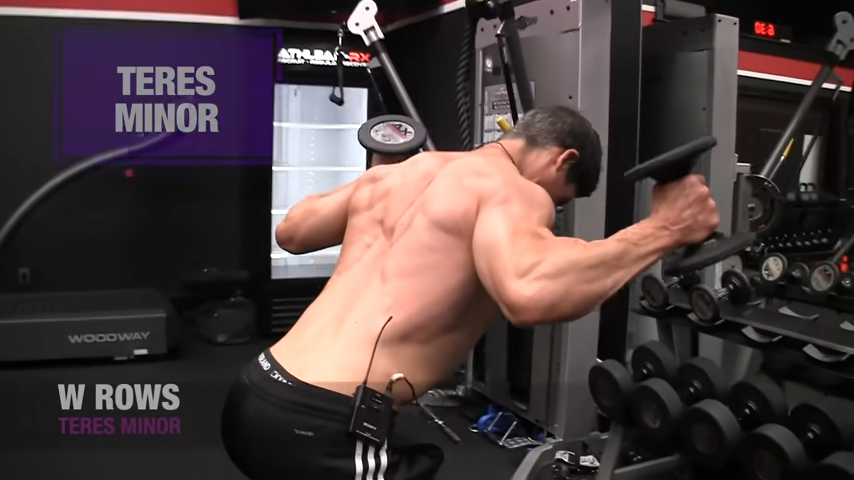
From this position, you row up and create that “W” shape with your arms and back.
While you don’t need a ton of grip strength here, I wouldn’t recommend heavy weight given the position the body is in.
If you understand the principles, the anatomy, why you’re training the way you are, and how to tweak those exercises, you’ll see there’s a lot more that goes into how to get a wider back than you originally thought.
Guys, if you upgrade your workout program and how you perform those exercises with what I’ve outlined above, I promise you that this will ultimately give you the best chance to create the widest back possible.
You’re developing exactly what you need to for optimal muscle growth and to make that back as wide as possible – not just the lats.
If you’re looking for a complete program to build muscle and strength from head to toe, we’ve got you covered. Check out our ATHLEAN-X programs to see which is the best match for your goals and fitness level.

- The fastest way to get a wider v-taper back is to focus your attention on the muscles in the back that contribute the most to width.
- The three that have the greatest impact are the latissimus dorsi, teres major and teres minor. These are the best exercises based on which muscle group they target.
- Starting with the lats, head over to the Lat Pulldown cable station to perform either an Underhand Pulldown or a Rocking Pulldown. The key here is that you want to get the elbows out in front of your body as far as possible to place a greater stretch on the lats. Also, as you pull down, each of these exercises will give you the best chance to keep your arm tightly adducted to your side to maximally activate the lats.
- Another lat-focused exercise is the One-Arm High Pulley Row. This is a great way to place the lats on tremendous stretch and take them through their full range of movement.
- Next up is the teres major. Heading back over to the Lat Pulldown machine, all you have to do is take a much wider, overhand grip on the bar and do a pulldown.
- Another teres major exercise is the Meadows Row. Created by John Meadows, the goal is to keep your elbow out wide away from your torso and position yourself perpendicular to the landmine barbell setup.
- Finally, we have the teres minor. Again, go over to a Lat Pulldown station to perform a Face Pulldown. Do this by attaching a rope to the pulldown machine, then pull down as you lean back.
- Finish strong with a classic Face Pull exercise, one of my favorite back exercises.

Jeff Cavaliere M.S.P.T, CSCS
Jeff Cavaliere is a Physical Therapist, Strength Coach and creator of the ATHLEAN-X Training Programs and ATHLEAN-Rx Supplements. He has a Masters in Physical Therapy (MSPT) and has worked as Head Physical Therapist for the New York Mets, as well as training many elite professional athletes in Major League Baseball, NFL, MMA and professional wrestling. His programs produce “next level” achievements in muscle size, strength and performance for professional athletes and anyone looking to build a muscular athletic physique.
















